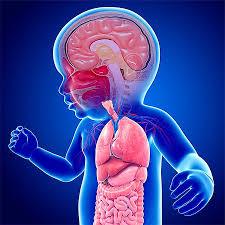Fetal and Neonatal Health: Brain Injury and Neurodevelopment Creatine: a novel treatment strategy for hypoxia-related injury Suitability: Honours Location: The Ritchie Centre, Hudson Institute of Medical Research, Level 5, Translational Research Facility, Monash Medical Centre, Clayton Project Leaders: Dr Robert Galinsky, Dr Stacey Ellery, Dr Nhi Tran Email: Robert.galinsky@hudson.org.au, stacey.ellery@hudson.org.au, nhi.tran@hudson.org.au Project description: Fetal hypoxia is a leading cause of brain damage around the time of birth. In utero hypoxic events can be unpredictable in nature and therefore administering treatment at the correct time can be difficult and even ineffective. Creatine is a novel prophylactic treatment strategy for hypoxiarelated injury during the perinatal period. Creatine is an endogenous phosphagen that functions predominantly to rapidly regenerate ATP in times of high energy demand and is thereby able to prolong the availability of intracellular energy for normal cellular function. Intracellular creatine levels can be increased with supplementation. We hypothesise that supplementation of creatine during pregnancy, prior to an hypoxic event, will decrease the impact of hypoxia on fetal organs by preventing ATP depletion and prolonging cellular homeostasis. Given that brain function is one of the most important attributes to preserve, the overall aim of this study is to investigate the neuroprotective capacity of fetal creatine supplementation following acute fetal hypoxia. We have previously shown that creatine supplementation improves cerebral metabolism during and following brief hypoxia induced by umbilical cord occlusion. We now sought to investigate whether these improvements in cerebral metabolism also translate to an improvement in brain function using in vivo real-time electroencephalography measurements. For this project we will use our preclinical near-term fetal sheep model of umbilical cord occlusion to investigate and assess the protective capacity of creatine pre-treatment on brain injury. The results of this preclinical project will inform future studies and may potentially inform clinical translation. The project will use techniques such as immunohistochemistry, histology, microscopy, molecular analysis, and analysis of fetal electronic monitoring measurements.
The Ritchie Centre | Student Research Projects 2023
Using heart rate variability to predict clinical disease in preterm babies Suitability: Honours/PhD Location: Level 5, Monash Medical Centre, Clayton Project Leaders: A/Prof Flora Wong, Prof Rosemary Horne Email: flora.wong@monash.edu Phone: 03 85723655 (A/Prof Wong) Project description: The early clinical signs of diseases in the preterm baby in the neonatal intensive care unit (NICU) are often very subtle and difficult to detect. However, once the infection or disease is developed, the preterm baby often deteriorates and becomes sick very rapidly. We aim to develop a new method using heart rate variability (HRV) to detect early clinical diseases. HRV is a measure of the beat-to-beat variation in time between each heartbeat. This variation is controlled by an important part of the nervous system called the autonomic nervous system (ANS). Our project will assess HRV as a non-invasive way to identify changes in the clinical condition of the preterm baby. We have recently acquired a clinical research software known as ICM+, developed at Cambridge University. The ICM+ software offers data collection and real-time analysis, facilitating personalised medicine. ICM+ can be connected to our bedside monitors in the NICU and perform continuous analyses of the HRV in realtime, on multiple babies simultaneously. We propose that continuous HRV can be used to assess well-being of the preterm babies in NICU, detect early infections and predict bleeding in the brain. RESEARCH PLAN: In preterm babies born at ≤28 weeks of gestation, the ECG recording from the NICU cot side monitor will be continuously analysed for HRV in the first 4 weeks of life, using the ICM+ software. Clinical records of the babies will be examined to determine periods of when the baby was clinically stable and when the baby suffered from infection and/or developed bleeding in the brain. Keywords: Prematurity, heart rate variability, infection, brain injury
Nanomedicine for preterm brain injury Suitability: Honours/Masters/BMedSc (Hons) Location: The Ritchie Centre, Hudson Institute of Medical Research; Level 5, Translational Research Facility, Monash Medical Centre, Clayton Project Leaders: Dr Tamara Yawno, A/Prof Rebecca Lim, Prof Rod Hunt, Dr Ishmael Inocencio Email : tamara.yawno@hudson.org.au Project description: The overall objective is to offer a safer, affordable, and more targeted form of regenerative medicine specifically designed for the treatment of Cerebral Palsy (CP), which is a physical disability that affects movement and posture. Currently, there is no known cure for CP, interventions are limited to early detection and symptomatic treatments. There is now encouraging 18








